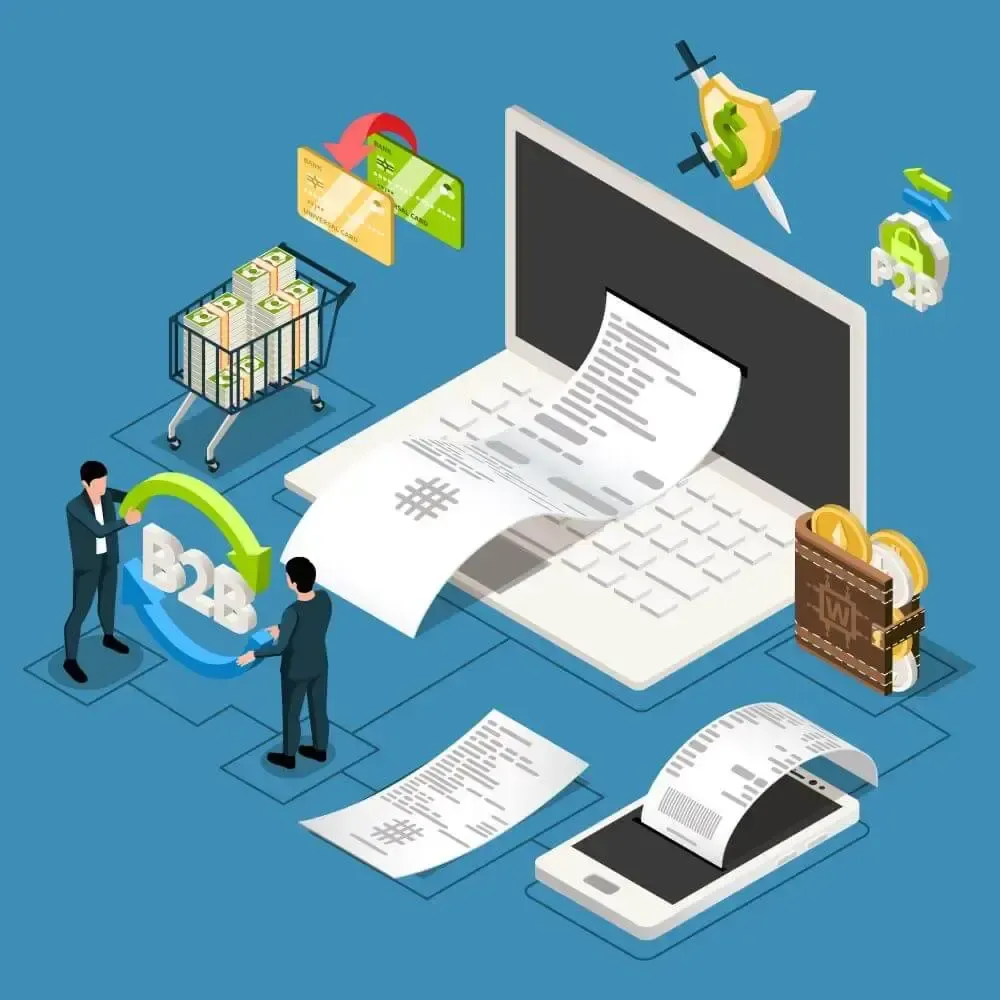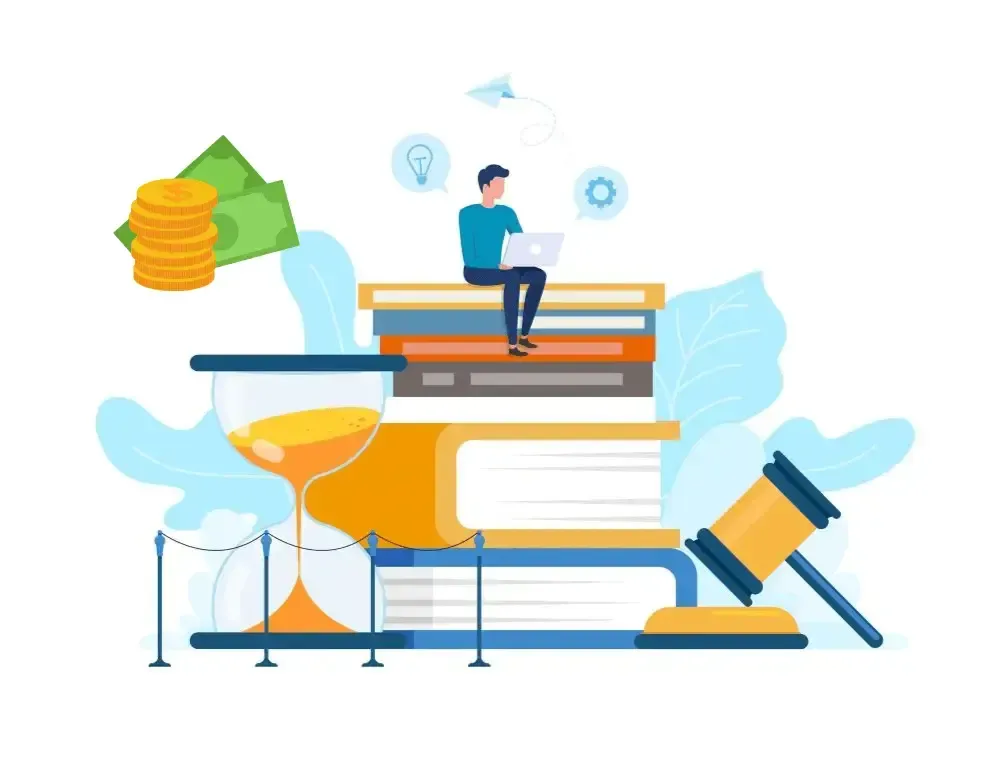What is e-invoicing?
An e-invoice, or electronic invoice, replaces a paper invoice. It is used to send and receive transaction data electronically between a supplier and a buyer.


Last modified on 2026-01-06 in e-invoicing
Due to digitization and the increased use of cloud services, paper invoices have been phased out throughout the past decade in favour of electronic invoicing. By adopting e-invoicing, businesses benefit from being able to limit errors, save time and increase their overall process efficiency.
E-invoicing or electronic invoicing, is a digital document that serves the same purpose as a traditional paper-based invoice, but offers many advantages over its physical counterpart. It is created for the purpose of exchanging and documenting a transaction in a structured data format between a business and its customers. It is worth noting that e-invoices are subject to local tax legislation and business must ensure that they comply with each nation's regulations.
The process begins with the issuance of the invoice, which is created using accounting software and stored in an electronic form. The e-invoicing system then sends the invoice, either directly to the customer's electronic data interchange or to the customer's email account, depending on the agreed invoicing method. The electronic invoice contains all the necessary information, such as the payment details, the product description, and the supplier and customer details ensuring fast and accurate handling of invoices.
By integrating an e-invoicing API into your business software, you can streamline your billing process and generate electronic invoices more efficiently. This also results in a better visual presentation of the invoice data in a structured form.
Overall, the adoption of e-invoicing has become a popular trend among businesses and is expected to replace paper invoicing methods in the near future. This is also due to many governments rolling out mandatory e-invoicing that is encouraging companies to see the benefits of electronic invoicing for themselves.

Receiving an e-invoice from your service provider is far less complex than obtaining a mailed, physical invoice. This is mostly due to the fact that the invoicing data input process can be automated. Therefore, the 2 main things to organize are:
In the EU, Directive 2014/55/EU outlines the correct structure. This is especially integral when receiving an invoice over different software. Therefore, it is important to choose a reputable e-invoicing provider especially when working for a private company that receives e-invoices from different countries so as to avoid tax evasion.
As soon as it is received, it can be useful to copy the file into an electronic archive to store and back up the information. Next, review the information carefully to make sure that it is accurate and not accidentally sent to the wrong corporation or in an incorrect amount. If there is a dispute, it is essential to communicate with the service provider in a timely manner to ensure that no deadlines will be missed, slowing down other business activities.
Tired of scrolling through information about e-invoicing?

Due to documents being fully digitalized through invoicing software, there is the elimination of printing, sending, and handling costs of paper invoices. In addition, labour costs associated with the manual input of data by employees are decreased through the automation of the e-invoicing process.
Businesses are able to save time through the automation of the manual invoicing process, decreased processing times, and improved communication between companies and customers, as well as being able to offer electronic payment options. In addition, it is much more time efficient to find old invoices through the Cloud since some companies store them for up to 10 years due to local regulatory requirements.
Since data can be automatically entered into a client’s ERP or accounting system, there is no risk of the invoice that is issued having misspelled words or incorrect numbers. E-invoicing enables that they are guaranteed to be received by the customer since there is no risk of mail being lost in transit or misplaced.
E-invoicing reduces the need for paper and ink since all documentation is digitalized. According to the research findings, transitioning from paper-based invoicing to electronic invoicing can reduce the carbon footprint of a single invoice's lifecycle by an impressive 63%.
Due to the elimination of paper documents, companies do not need to dedicate space for storing invoices and instead they are able to simplify their archive by using an e-invoice system. By doing so, they are able to access their documents and invoice information from wherever and whenever, virtually free of charge without needing to sort through physical files.
With e-invoices, companies do not have to wonder about the received electronic invoice status. Furthermore, they are able to embed pixels into their confirmation emails and make sure that customers have the correct information about their outstanding balances.
The utilization of electronic invoices can decrease turnover as clients can access their invoices quicker, resulting in a decreased payment window. Clients are also able to conveniently choose an online payment method to expedite the revenue-receiving wait time. This positively impacts a company's financial competitiveness as it is able to have access to greater borrowing capital and be perceived more favourably by investors.

Multinational companies that operate in at least two different countries, must make sure that their invoices follow the rules and standards of their local legislation. For example, in the European Union, the European Commission is heavily encouraging the use of e-invoicing with the majority of countries rolling out legislation that will require all B2B invoicing to be electronic by 2025. Our DDD Invoices e-invoicing solution was created to assist such companies and make sure that their e-invoices are up-to-date with the latest regulations.
PEPPOL stands for Pan-European Public Procurement Online, and it is essentially a framework of electronic messaging protocols that simplifies the procurement process in Europe. It not only facilitates the process, but it also allows businesses to connect and communicate electronically with buyers across the continent. The PEPPOL network includes both public and private sector organizations across Europe, which makes it easier for businesses to work with public sector buyers.
Furthermore, the aim of PEPPOL is to enable the secure and efficient exchange of business documents such as purchase orders, invoices, and other procurement-related documents in a standardized way. This reduces the amount of manual work and paperwork required for procurement and simplifies the entire process, which benefits both buyers and suppliers.
Also called an electronic invoice, it is a digital document that replaces a traditional paper invoice used to exchange and document transactions between a business and its customers. It eliminates the need for manual data admission resulting in a more efficient, mistake-minimized, and automated invoicing process. Compliance requirements vary from country to country as they are subject to the local tax administration. It is important to note that a digital invoice does not equal an electronic invoice.
No, it is a digital format for invoicing, but it is not the only one available and its use varies by industry. A PDF invoice is not considered a fully structured data file due to commonly containing static text and images which may require some manual information entry or conversion into a fully structured electronic format for ease of processing. It is important to review invoice requirements used by your invoicing system to ensure a smooth process from service provider to seller.
It depends. It varies from country to country with the European Union rolling out mandatory electronic invoicing systems in the next few years. Many countries are following suit making businesses responsible for their invoicing compliance by their local tax authority. Organizations such as DDD Invoices can assist them in implementing a system to help them adjust.
Written by the Compliance team
Reviewed by Denis V. P.